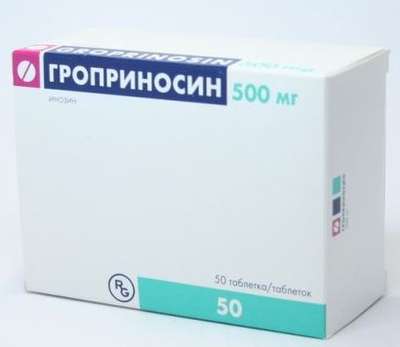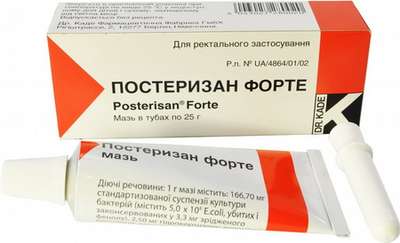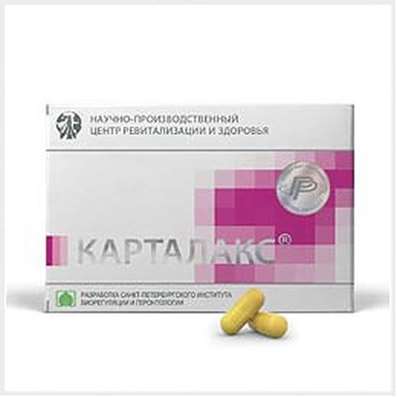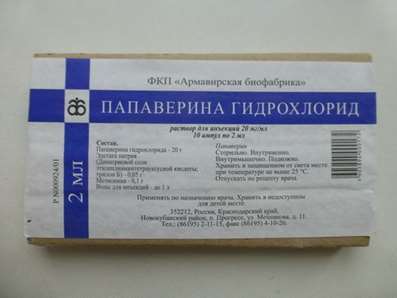Instruction for use: Vesanoid
I want this, give me price
Active substance: Tretinoin
ATX code L01XX14 Tretinoin
Pharmacological group
Other antineoplastic agents
Nosological classification (ICD-10)
C92.4 Acute promyelocytic leukemia
C92 Myeloid leukemia [myeloid leukemia]
Ph-positive chronic myelogenous leukemia, Granulocytic leukemia, Myeloid leukemia, Myeloid leukemia, Myeloma disease, Neuroleukemia, Acute myeloblastic leukemia, Acute non-lymphoblastic leukemia, Acute non-lymphoblastic leukemia in adults, Refractory acute non-lymphoblastic leukemia, Induction of remission in PMLL, Transformation of preleukemias, Subleukemic myelosis, Myeloblastic leukemia, Myeloid leukemia
Composition and form of release
Capsules 1 caps.
tretinoin 10 mg
auxiliary substances: soybean oil; beeswax yellow; soy bean oil hydrogenated; soy bean oil partially hydrogenated
capsule shell: gelatin; glycerol 85%; Carion 83 (sorbitol, mannitol, potato hydrolyzed starch); titanium dioxide (E171); iron dye oxide yellow (E172); iron dye red oxide (E172)
in bottles of dark glass for 100 pcs., in a pack of cardboard 1 bottle.
Description of dosage form
Soft gelatin capsules oval, one half of the capsule is yellow-orange, opaque; the other half - a reddish-brown color, opaque.
The contents of the capsules are a suspension from yellow to greenish-yellow.
pharmachologic effect
Pharmacological action - antitumor.
Pharmacodynamics
Fully trans retinoic acid is a natural metabolite of retinol, belonging to the class of retinoids, which includes natural and synthetic analogs. In vitro studies have shown that trans-retinoic acid induces differentiation and suppresses the proliferation of transformed hematopoietic cells, incl. with myeloleukemia in humans. The mechanism of action in acute promyelocytic leukemia (OPML) can be a change in the binding of trans retinoic acid to nuclear retinoic acid receptors (RRB), where the retinoic acid α receptor also changes due to fusion with the PML protein.
Pharmacokinetics
Fully trans-retinoic acid is an endogenous metabolite of vitamin A, normally present in plasma. After oral administration, trans-retinoic acid is well absorbed. Cmax in blood plasma is achieved after 3 hours. Absorption of trans-retinoic acid varies greatly both in different and in the same patient. Trans-retinoic acid strongly binds to plasma proteins. After reaching the peak, the plasma concentration decreases, the average T1 / 2 is 0.7 hours. After a single dose of 40 mg of the drug, the plasma concentration returns to the endogenous level after 7-12 hours. With repeated intake of cumulation, all trans retinoic acid does not occur, in tissues the drug is not delayed.
The main way of elimination (60%) is excretion through the kidneys in the form of metabolites formed during oxidation and glucuronization. Fully trans-retinoic acid is isomerized to 13-cis-retinoic acid and oxidized to 4-hydroxymetabolites. They have a longer half-life than trans-retinoic acid, and can be cumulated in small amounts.
With prolonged intake, the concentration of the drug in the plasma can be significantly reduced, possibly due to the induction of the cytochrome P 450 enzyme system, which increases clearance and decreases the bioavailability of the drug after oral administration.
The need for dose adjustment in patients with impaired renal or hepatic function was not investigated.
Indication
Induction of remission in PFS (classification according to FAB-AML-M3) in previously untreated patients and in patients with relapses or refractory to standard chemotherapy (daunomycin and cytarabine or their analogs).
Contraindications
hypersensitivity to the drug;
pregnancy;
lactation;
simultaneous reception of vitamin A.
With caution - the simultaneous administration of tetracyclines, antifibrinolytic drugs, mini-pili with progesterone.
pregnancy and lactation
All of the following measures should be considered in conjunction with the severity of the disease and the urgency of therapy.
Fully trans-retinoic acid has a teratogenic effect. It is contraindicated in women who are already pregnant. If a pregnancy occurs at a time when a woman is taking fully trans-retinoic acid, regardless of the dose and duration of treatment, there is a very high risk of having a child with malformations. Treatment with all-trans retinoic acid is prescribed to patients of childbearing age only if each of the following conditions is met:
- the patient is informed by doctors about the danger of pregnancy in the course of and for 3 months after treatment with all-trans retinoic acid;
- the patient wishes to apply mandatory measures of contraception.
It is absolutely necessary that every patient of childbearing age receiving tretinoin uses effective contraceptive measures during treatment and within 3 months after completion of treatment with all-trans retinoic acid.
During treatment, you should conduct pregnancy tests at least once a month.
If, despite these precautions, during pregnancy with tretinoin or within one month after discontinuation of the drug, pregnancy appears, the risk of having a child with malformations is very high, especially if all of the trans-retinoic acid has been prescribed in the first trimester of pregnancy.
If therapy is completely trans-retinoic acid, breast-feeding should be discontinued.
Side effects
When treating the recommended doses of all-trans retinoic acid, the most frequent side effects were the symptoms of hypervitaminosis A, which occur when using all other retinoids.
Skin and mucous membranes: dry skin, erythema, rash, itching, increased sweating, alopecia, cheilitis, dry mucous membranes of the mouth, nose, conjunctiva and other mucous membranes, with or without inflammation, in rare cases - the formation of ulcers on the mucous membrane of the genital organs, Svita syndrome, erythema nodosum
CNS: headache, intracranial hypertension (mainly in children), fever, chills, dizziness, confusion, anxiety, agitation, depression, paresthesia, insomnia, weakness.
Organs of the senses: visual and hearing impairments.
Musculoskeletal system: pain in the bones, pain in the chest, in rare cases - myositis.
Gastrointestinal tract: nausea, vomiting, abdominal pain, diarrhea, constipation, decreased appetite, pancreatitis.
Disorders from the metabolism, liver and kidneys: increased concentration of triglycerides, cholesterol, creatinine in the serum, increased activity of transaminases (ALT, AST); isolated cases of hypercalcemia.
Respiratory organs: pleural effusion, shortness of breath, respiratory failure, bronchospasm.
Cardiovascular system: rhythm disturbances, hot flushes, swelling, individual cases of thrombosis.
The system of hematopoiesis: rare cases of thrombocytosis, severe basophilia with clinically manifested hyperhistaminemia or without it, mainly in patients with a rare variant of OPML with basophilic differentiation.
The decision to interrupt or continue therapy should be based on an assessment of the relationship between the benefits of treatment and the severity of side effects.
Retinoic acid with OPML: In many patients with PMLD (up to 25%) against the background of treatment with tretinoin, retinoic acid (RBC) appears. CRC is characterized by fever, dyspnea, acute respiratory distress syndrome, the development of pulmonary infiltrates, arterial hypotension, pleural and pericardial effusion, swelling, weight gain, hepatic, renal and multiple organ failure. IBS is often accompanied by hyperleukocytosis and can lead to death (see "Precautions").
Information on the use of tretinoin in children is limited. There are reports of increased toxic effects in children receiving tretinoin, in particular, intracranial hypertension.
Interaction
Since all-trans retinoic acid is metabolized by the hepatic cytochrome P450 system, it is possible to change the pharmacokinetics of concurrent drugs that are inducers or inhibitors of this enzyme system. The drugs stimulating the activity of liver enzymes of the P450 system include rifampicin, GCS, phenobarbital and pentobarbital. The drugs that inhibit the activity of the liver enzymes of the P450 system include ketoconazole, cimetidine, erythromycin, verapamil, diltiazem, and cyclosporin. Data that would indicate a change in the efficacy or toxicity of these drugs when used simultaneously with all-trans retinoic acid, no. Information about the possible pharmacokinetic interactions between fully trans-retinoic acid and daunomycin and cytarabine is not available.
Antifibrinolytic agents, such as tranexamic acid, aminocaproic acid and aprotinin: in patients who simultaneously receive all-trans retinoic acid and antifibrinolytic drugs, rare cases of thrombotic complications with a fatal outcome are described. Care should be taken when administering all trans-retinoic acid with these drugs.
Small doses of progestogens ("mini-pili"): completely trans-retinoic acid reduces the contraceptive effectiveness of these drugs.
Tetracyclines: Systemic therapy with retinoids can lead to intracranial hypertension. Since tetracycline drugs can also increase intracranial pressure, they should not be administered simultaneously with all-trans retinoic acid.
Vitamin A: like other retinoids, all-trans retinoic acid should not be used in combination with vitamin A because of the symptoms of hypervitaminosis A.
Dosing and Administration
Inside. The daily dose is 45 mg / m2 in two divided doses. For adults, this equals about 8 caps. For children, the same dose is recommended, unless severe toxic effects occur; in particular, the dose should be reduced if the child develops severe headaches.
Treatment should be continued from 30 to 90 days until a complete remission is achieved. After this, immediately go to the standard regimen of consolidating chemotherapy, for example, three courses of daunorubicin and cytarabine at intervals of 5-6 weeks.
If the remission has occurred with monotherapy with a weightoid, it is not necessary to change its dose when chemotherapy is connected.
Dosing in special cases
Due to the lack of pharmacokinetic data of Vesanoid in patients with renal and / or hepatic insufficiency, the dose of the drug for this category of patients should be reduced by 25 mg / m2.
Overdose
An overdose of tretinoin will be manifested by reversible symptoms characteristic of hypervitaminosis A. The dose recommended for patients with PMLD is 1/4 of the dose tolerated by patients with solid tumors, and is less than the maximum tolerated dose for children.
There is no specific overdose treatment, however it is important that the patient be placed in the hematology unit.
Precautionary measures
In patients with hyperleukocytosis, which occurs against the background of monotherapy with tretinoin, the prevention of IBS consists in the connection of full-dose chemotherapy with anthracyclines while monitoring the level of leukocytes. Currently, the following therapy scheme is recommended:
- Immediate initiation of treatment if, at the time of diagnosis or at any time against the background of combination therapy, all trans-retinoic acid and chemotherapy have a number of leukocytes exceeding 5000 in 1 μl;
- connection of full-dose chemotherapy to treatment with a weightloid in patients with a white cell count of less than 5000 in 1 μl by the time of diagnosis, if the leukocytosis rises to ≥6000 in 1 μl - on days 1-6 of treatment, ≥10,000 in 1 μl - for 7-10 days treatment and ≥15,000 in 1 μl - on days 11-28 of treatment;
- if the earliest signs of IBS occur, it is necessary to begin treatment with dexamethasone (10 mg every 12 hours for a maximum of 3 days or until the IBS is stopped);
- with a moderate and severe course of IBS, consideration should be given to temporarily interrupting therapy with all-trans retinoic acid.
Care should be taken when treating patients with a combination of Vesanoid and antifibrinolytic drugs such as tranexamic acid, aminocaproic acid or aprotinin because there is a risk of thrombosis in the first month of therapy (see "Interactions").
Completely trans-retinoic acid should be administered only to patients with PFS, under close supervision of a hematologist or oncologist.
In the treatment of patients with OPML with tretinoin, supportive measures, such as bleeding prevention and anti-infective therapy, should be carried out. It is often necessary to monitor the blood picture, the clotting parameters, the liver function and the concentration of triglycerides and cholesterol.
Influence on ability to drive transport and work with machines and mechanisms
In the treatment of all-trans retinoic acid, this ability can be disrupted, especially if the patients have dizziness or severe headaches.
storage Conditions
In the dark place, in a tightly closed container, at a temperature of no higher than 30 ° C.
Keep out of the reach of children.
Shelf life
3 years.
Do not use after the expiry date printed on the package.

 Cart
Cart





